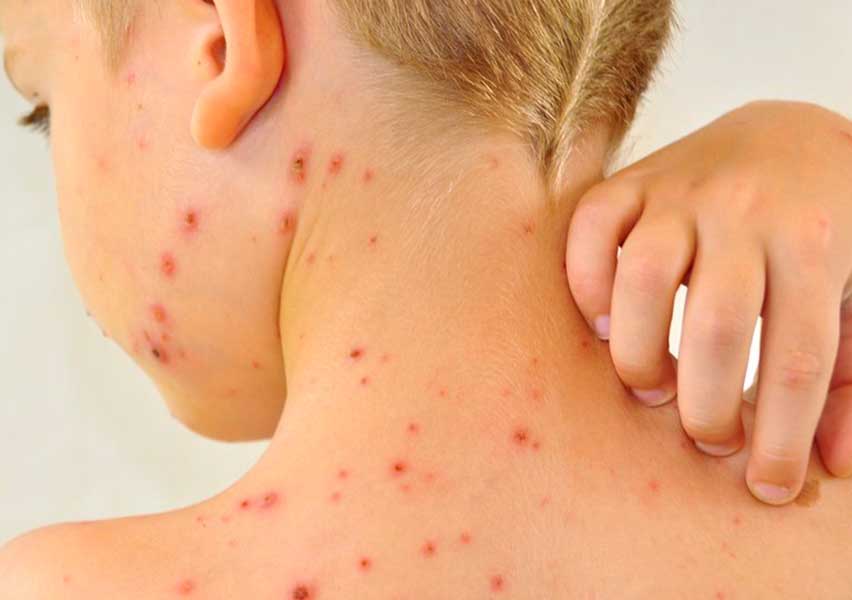Varicella-Zoster virus
Varicella-zoster herpesvirus (VZV) belongs to the Herpesviridae family. It is a virus with linear and double-stranded DNA. Each particle is about 150-200 nanometers in diameter and consists of an icosahedral nucleocapsid surrounded by a lipid shell. VZV is characterized, like other members of the Herpesviridae family, by its ability to remain in a latent state inside the human body.
Clinical features: Initial symptoms include the sudden onset of a low-grade fever and a feeling of tiredness and weakness. Shortly after, a rash appears in the form of itchy blisters. After a while the blisters dry up and a scab form. Blisters tend to be more common on parts of the body that are covered than on those that are not. They can appear on the scalp, in the armpits, on the trunk and even on the eyelids or in the mouth.
Symptoms usually appear 14 to 16 days (minimum 10 and maximum 21) after exposure to a person with chickenpox or shingles. Transmission occurs mainly through inhalation of bioaerosols or mucosal contact with droplets from respiratory secretions, as well as fluid from skin vesicles. It can also be transmitted through direct contact with skin lesions and objects recently contaminated with secretions from cutaneous and mucous vesicles. A person with chickenpox is most contagious a day or two before the rash appears and until the time the blisters dry up and form a scab.
VZV continues to be associated with central nervous system (CNS) disease, with meningitis being the most frequent clinical presentation. VZV disease of the CNS often presents without herpes zoster rash.
Diagnosis: Currently, the most reliable and sensitive method to detect VZV DNA is PCR. Especially in case of presenting neurological symptoms (myelitis, meningitis or encephalitis) it is considered the technique of choice in CSF samples.
The analysis of antibodies in serum (mainly IgG) allows to confirm the diagnosis retrospectively, and is also useful to measure immunity after vaccination (ELISA or CLIA). Also, direct immunofluorescence (DFA) to detect VZV antigen is an option.
In cases of acyclovir-resistant VZV, detections of thymidine kinase mutations can be determined by PCR and sequence analysis.
Treatment: There is no cure for shingles. Like HSV-2, the varicella-zoster virus can remain in the body in an inactive state. Antiviral medications decrease the duration of symptoms and the likelihood of postherpetic neuralgia. Oral acyclovir may be prescribed in otherwise healthy patients who have typical cases. Compared with oral acyclovir, other medications (eg, valacyclovir, penciclovir, famciclovir) may decrease the duration of the patient's pain.
The chickenpox vaccine is very safe and effective in preventing the disease.

